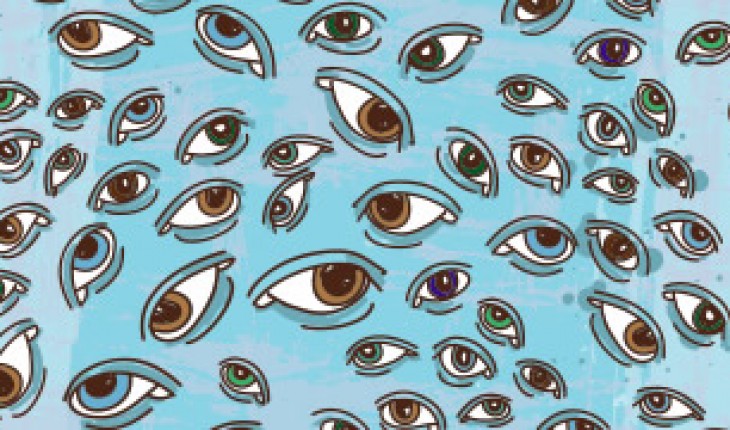Technology from the US could mean that someone could change their eyecolour permanently using a special type of laser.
Dr Gregg Homer, who has a PhD in biology and is ‘an inventor rather than a medical doctor’ in his own words, is founder of the California-based company Stroma Medical that has patented the controversial technique. He says the technology is safe and will change the lives of thousands of people for the better. Certainly the results of an initial human trial, on 17 patients in Mexico, are startling. Before-and-after photographs show that the patients’ dark brown irises turned bright blue where they had been exposed to a targeted laser beam.
For those who can’t wait to turn their brown eyes blue, the Stroma device is likely to be available in South America, Asia, the Middle East, and Southern Europe, within the next 18 months, although a lot depends of the results of further human trials to check for safety and an injection of a further £10m from investors.
The payback could be substantial though. Homer believes that legions of brown-eyed people will be willing to pay more than £3000 to get baby blue peepers of their own. Years before the technique will be available, he says he is already getting around 300 enquiries each day. Whether or not that is true, there is no doubt that there is an enduring appeal associated with blue eyes, which are a trait of Northern Europeans although they are found rarely in places like Afghanistan and Iran. Only around eight per cent of the world’s population has blue eyes.
Think violet-eyed Elizabeth Taylor and the ultimate blue-eyed poster boy, actor Paul Newman. Their amazing eyes are still famous even after their deaths. And a bias towards blue eyes does seem to exist outside Hollywood too. One US study found that blue eyed children tended to achieve more than their peers as they tend to study more effectively and perform better in exams. And studies show that blue eyed men at least, show a romantic preference for blue eyed women.
So how does Dr Homer’s laser actually work? The technical detail remains a closely guarded secret but it seems that Stroma Medical has borrowed an idea from aesthetic doctors the world over who already use lasers to remove excess pigmentation from the skin. The Stroma laser is directed at the iris and more energy is absorbed by the darker areas – the cells which produce the brown pigment called melanin. The dark cells are destroyed by the heat from the laser, but the clear lens and the lighter cells are left intact because they don’t absorb the energy in the same way. Removing the brown pigment is enough to do the trick because blue eyes are not really blue at all, just as the sea is not really full of blue water – that’s a trick of perception caused by scattered light. A blue iris is simply an iris without colour.
The effectiveness of the procedure, which is likely to be irreversible, seems to be proven. However, the jury is still out as to whether this will pass stringent safety tests. Dr Nick Lowe, a consultant dermatologist in London and professor at UCLA in the US, believes that there will be a demand for the Stroma technology but advises against such a drastic procedure for the sake of an aesthetic result. “We just don’t know if this is going to leave long-term damage, and the risk really isn’t worth it for a cosmetic effect.”
But aren’t lasers already extensively used for eye surgery, including for the correction of vision problems, with major safety fears?
Dr Mark Korolkiewicz, an optometrist and clinical services director at Ultralase, a nationwide laser vision correction specialist, insists that there are fundamental differences between the Stroma laser procedure and corrective eye surgery which has been carried out safely using lasers for the last 20 years. “The basic rule of thumb is that as soon as you go inside the eye with a laser, you can cause more damage. We only use lasers on the cornea, the surface of the eye with an accuracy measured in microns. This new treatment involves using a laser inside the eye itself, to damage cells in the iris in a controlled way.”
He points out that pigment that is released in this process may clog the fine mesh work designed to act as a drain for fluids inside the eyes, which may ultimately lead to glaucoma and cataracts. Alternatively, it may cause internal inflammation. “Sometimes, these complications may take years to show an effect, when it is far too late to do anything about it.”
Dr Homer replies to such criticisms saying that the Stroma device only targets the thinner pigment at the front of the iris, not the thicker pigment at the back, which could potentially clog the eye’s natural drainage system. “Regarding safety, we have treated 17 humans so far as part of our preliminary human study and there were no negative side effects at all. Our next step will be to treat one full iris of 100 patients in multiple countries and follow them for a full year. It is possible that some negative side effect will appear during this full-year phase, but it is unlikely based on our safety results so far. In the end, we will not release any procedure anywhere in the world unless and until the governing regulatory bodies and Strōma Medical are satisfied that the procedure is safe and effective. “
He also anticipates that the procedure will only be performed by highly skilled ophthalmologists, each of whom will be extensively trained on the device before they are able to take paying patients.
Finally, it may be the moral question which ultimately gives people most pause for thought. When I first heard about this technique, I must say that I winced at the implication of people seeking an Aryan ideal over their own heritage. Dr Homer, who has Jewish roots himself, refutes this idea. “I’ve heard the eugenics remark a few times, but I don’t really understand it. Is the charge that there is something racist about giving people the option to have blue eyes? I fail to see the connection. Do they make the same claim against hair salons for offering a procedure to lighten hair color? The comment is particularly hurtful to me because my father was Jewish, and he was awarded the Bronze Star and the Purple Heart for his brave fight against the Nazis in Europe during WWII.”
For him, this is simply about personal preference – the shade of eyes you want to see staring back at you in the mirror each morning. “Personally, I think brown eyes are beautiful, but I also believe that it’s nice for people to have options. Some people are happy with their brown eyes; others would prefer blue eyes. This technology just gives them the option to choose.”
Why do we have brown, green or blue eyes?
Everyone’s eye colour is determined in their genes, the little packets of DNA that encode our unique blueprint . Our eye colour depends on several different genes, which together control the amount of pigment – melanin – produced in the iris.
Dr Jess Buxton, from the British Society of Human Genetics explains: “These genes come in several different ‘flavours’, or variants, so your eye colour is determined by the particular combination of gene variants that you inherit from both your parents. If you inherit a ‘lots of melanin’ gene variant from one or both parents, this will mask the effects of any ‘not much melanin’ variants, so you will have brown eyes. However, the ‘not much melanin’ variants can still be passed on through the generations – and anyone who inherits these variants in the absence of any ‘lots of melanin’ variants will have blue eyes.”
Roughly speaking, if both parents have blue eyes, their offspring will have blue eyes too. If both parents have brown eyes, it is more likely that any child will have brown eyes, although blue eyed children can be born if there are blue eyed ancestors on either side of the family. “This means that although blue eyes may ‘skip’ one or more generations, they won’t be lost from the population – they may reappear any time two brown-eyed people who both carry a combination of the ‘not much melanin’ and ‘lots of melanin’ variants have children,” explains Dr Buxton.
And even when generations of family members have brown eyes, a blue eyed child can suddenly be born due to genetic mutation according to Dr Buxton. “In addition, the ‘lots of melanin’ gene variants (like all genes) will occasionally acquire mutations that turn them into ‘not much’ variants – such new mutations means that blue eyes will never entirely be lost from a population.”
- New lipid-based pathway discovered as key to memory formation - 25th June 2025
- Crucial link could explain how Alzheimer’s takes hold - 25th June 2025
- Understanding Your Mind Can Improve Daily Life - 25th June 2025






